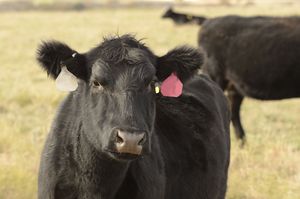USDA’s Livestock Risk Protection Deserves a Second Look
 USDA’s insurance products have proven successful for crop farmers. Often providing a lifeline after natural disasters. Yet, for all its successes there has never been a widely used product to help cattle producers manage price risk. That could be changing due to recent improvements to Livestock Risk Protection (LRP) plan of insurance.
USDA’s insurance products have proven successful for crop farmers. Often providing a lifeline after natural disasters. Yet, for all its successes there has never been a widely used product to help cattle producers manage price risk. That could be changing due to recent improvements to Livestock Risk Protection (LRP) plan of insurance.
What is LRP?
LRP protects producers from unexpected price declines. It allows producers to insure their cattle based upon expected market prices and protects them if prices fall unexpectedly.
LRP allows producers to insure between 70% and 100% of the projected price of their cattle. The projected price is based upon feeder cattle or live cattle futures prices and may vary depending upon the type of cattle (e.g., steers or heifers) and the weight of the cattle. The insurance coverage can be matched to the time that the cattle would typically be sold. LRP provides coverage for cow/calf, stocker, and feedlot operations. LRP has been available since 2003, but participation remained low due to perceived cost and other issues such as lack of options to insure further ahead than a few months.
 Recent Improvements
Recent Improvements
On July 1 2019, USDA implemented significant improvements to LRP and has recently announced that additional improvements will be effective on July 1st of this year. Changes that have and will soon take place include:
- Affordability: Reducing cost by increasing the premium discount from 13-25% for the highest levels of coverage and even higher for coverages with over a 5% deductible;
- Delayed Premium: Allowing premium to be paid after the insurance coverage ends; and
- Head Limits: Increasing the number of head that can be insured.
Together these changes make LRP significantly more appealing to producers. While premiums still need to be reduced, it’s important to note that today’s LRP isn’t the LRP of old.
Additional Potential Changes
In August USDA’s Federal Crop Insurance Board of Directors will once again consider further improvements to LRP. When determining whether to make changes to an insurance program, producer support is one of the key criteria that is considered. Cattle producers who are interested in improved risk management options should email Applied Analytics (information at bottom) to learn about efforts underway to continue to improve LRP. If approved, these changes will provide cattle producers an affordable tool so they can better protect themselves in today’s volatile markets.

Bottom-Line
LRP is a much-improved program. Today it’s more affordable and has tremendous flexibility. While USDA needs to continue improving LRP – in today’s volatile market it is worth a second look.
About the Author: From 2013-2017 Brandon Willis oversaw USDA’s insurance programs as the Administrator of the Risk Management Agency. Before that he served as a Senior Advisor to U.S. Secretary of Agriculture Tom Vilsack. He owns Ranchers Insurance LLC an insurance agency that sells LRP. He can be reached atbrandon@ranchersinsurance.com.
To learn more about potential LRP changes or to suggest improvements contact Peter Griffin the developer of LRP atPetegr@apldag.com
Source: Brandon Willis, Drovers Journal
